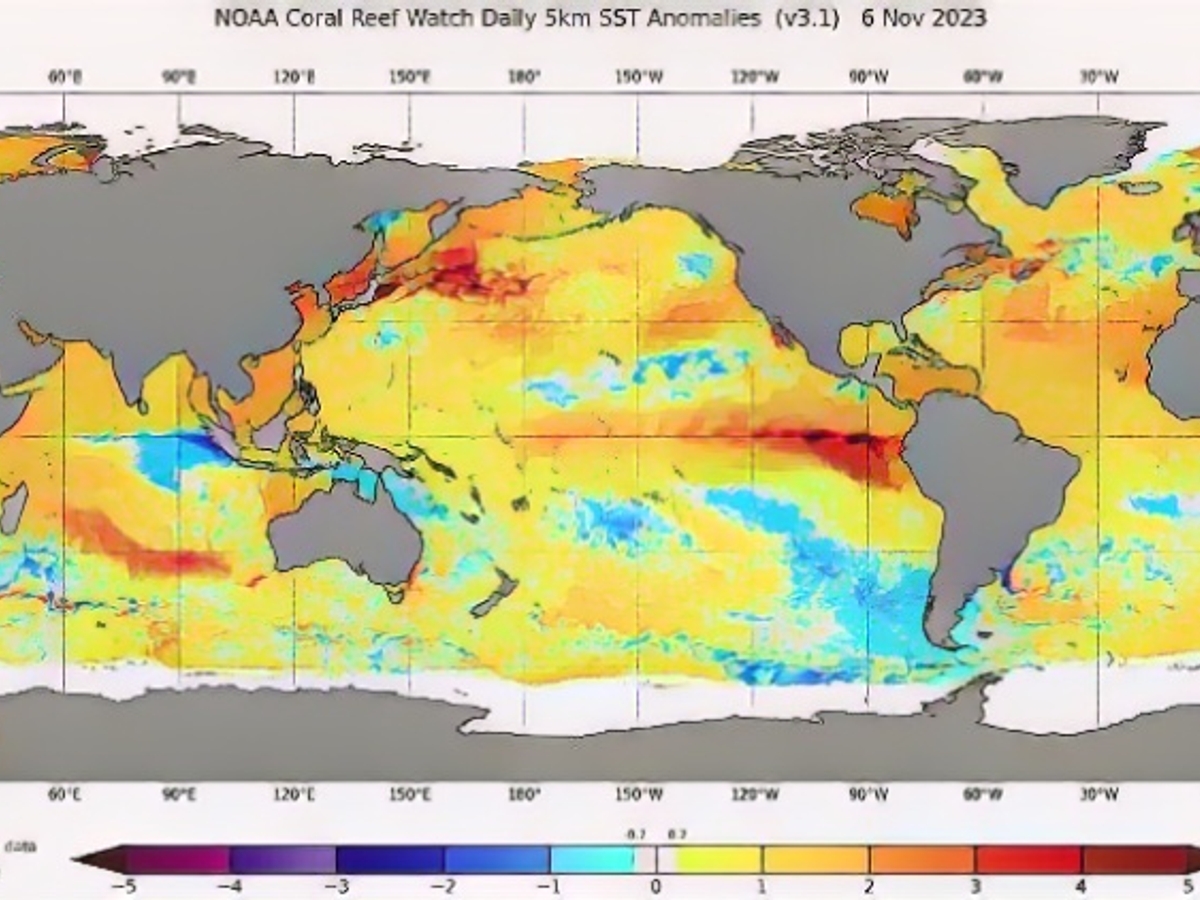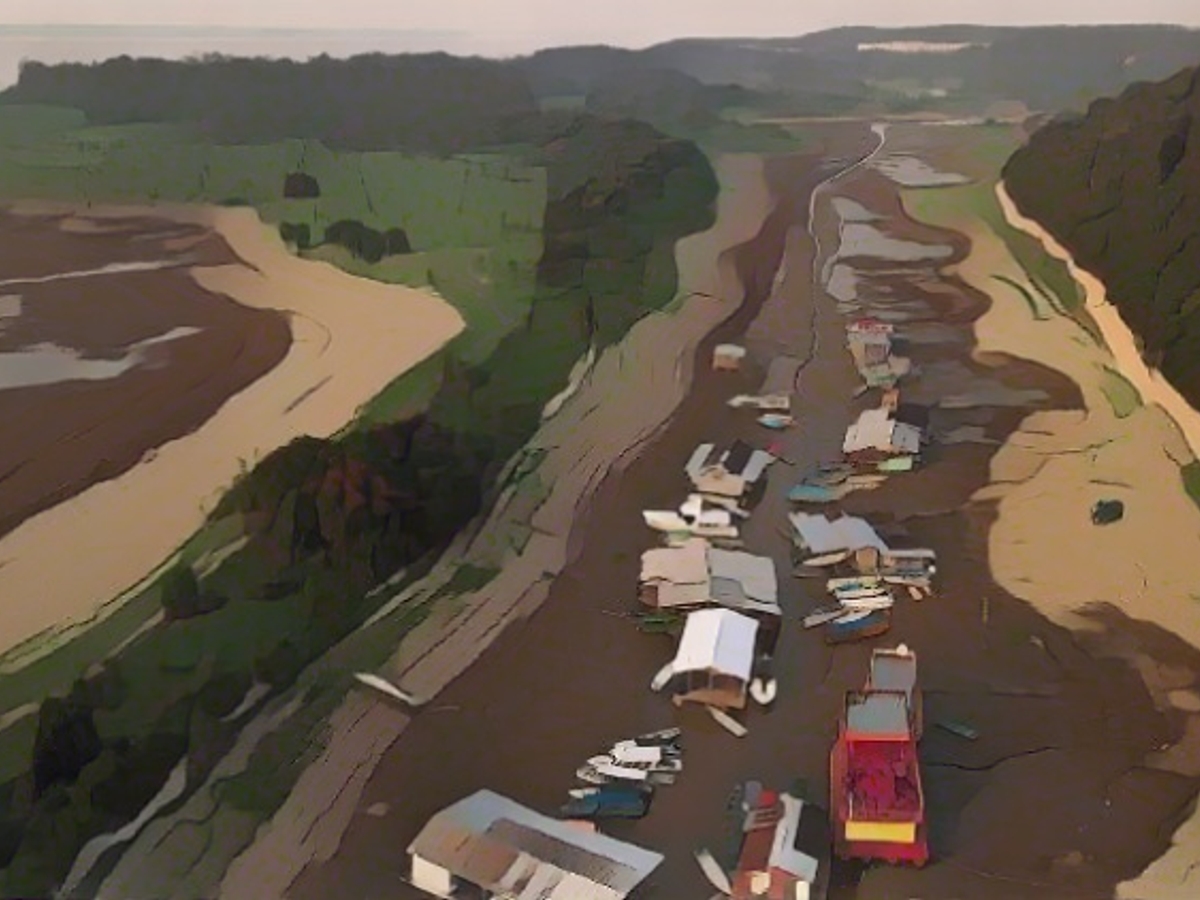El Niño and climate change lead to the drought of the century
An extreme drought is ravaging the Amazon basin. In October, the level of the Rio Negro fell to a historic low. The effects on people, wildlife and the rainforest are devastating and an urgent warning of the consequences of global warming.
The Rio Negro is actually the sixth largest river in the world in terms of discharge. In October, however, it carried less water than at any time since records began at the start of the 20th century. The consequences: A standstill and loss of electricity production at Brazil's fourth largest hydropower plant at the Santo Antonio dam, with an installed capacity of 3.5 gigawatts. In Manaus, ships can no longer deliver food and other goods to the capital of the state of Amazonas, which has more than two million inhabitants. Many small towns in the region are also difficult to reach, as the rivers in the dense rainforest are the most important transportation route.
Pictures of dead river dolphins have gone around the world. The drought clears the otherwise often cloudy skies over the rainforest. The scorching tropical sun heats the severely shrunken waters to life-threatening temperatures, which further increases evaporation and severely affects wildlife.
In addition, forest fires in the region are taking on dangerous proportions. Yet without humans, there would be no fires in the Amazon rainforest. Even in the regular dry season from June to September, it is actually too humid there. But in order to create farmland and cultivate it, the land is set on fire - the fire takes over the otherwise infinitely laborious work. More and more often, the fires get out of control and much more burns down than intended.
El Niño responsible for the most severe droughts in the Amazon
Some of the reasons for the drought in the Amazon basin are far removed. The warm phase of the El Niño Southern Oscillation (ENSO), known as El Niño (Spanish for "The Christ Child"), plays a major role, as it often peaks around Christmas time. Such a strong El Niño has developed in the eastern tropical Pacific in recent months. A gigantic body of water in the equatorial Pacific Ocean warms up thousands of kilometers to the west from South America - with consequences that extend far beyond this region. El Niño influences the weather in practically the entire Pacific region and even far beyond.
The reason for this is the so-called Walker circulation, which moves large-scale air masses from east to west and back. If temperatures in the central or eastern tropical Pacific are particularly high due to an El Niño phenomenon, the air rises more strongly there and more rain falls. In turn, it sinks further west around Australia and the island states of South East Asia, but also further east over Brazil. There is an increase in high-pressure systems with little precipitation and much more sunshine than usual.
The definitions of when to speak of an El Niño vary in the countries affected and among different institutions. They usually refer to the deviation of the sea surface temperature in a narrowly defined area called Niño 3.4 in the equatorial Pacific over a certain period of time. Most El Niño events are only weak to moderate. The surface temperature in this area is only 1 to 1.5 degrees Celsius above normal.

Different types of El Niño
The last major El Niño event to date, in 2015/16, was already a record event with temperature deviations of almost 3 degrees, similar to the El Niño of 1997-1998. Although the El Niño that started this year is likely to be somewhat weaker, sea temperatures in the eastern Pacific are currently significantly higher than during the previous El Niño.
One reason for this is that there are different types of El Niño: Sometimes the greatest temperature deviations are concentrated in the central tropical Pacific near the International Date Line. This is referred to as a central El Niño or an El Niño Modoki (Japanese for "similar but different"). The El Niño event of 2015/16 was one such event.

As a rule, however, the maximum temperature is much further east, closer to the coast of South America and with a correspondingly greater impact on South America. Such a coastal El Niño is looming this year, with stronger consequences as far as the Amazon basin. Since March, water temperatures have been up to six degrees higher just off the coast of Ecuador and Peru - a huge deviation from normal. And this immediately after an exceptionally long La Niña event of around three years, i.e. the counterpart to El Niño with significantly cooler temperatures than usual in the eastern tropical Pacific. As El Niño usually reaches its maximum in the winter months, the drought in the Amazon basin could become even more severe and continue well into the actual rainy season.
The influence of global warming
The extent to which global warming contributes to the situation is controversial, at least in some aspects, but less so in the overall picture. On the one hand, it is still completely unclear how global warming affects El Niño. Some climate models predict increasing La Niña conditions, while others predict more frequent and more intense El Niños.
Some climate researchers, such as Mojib Latif from the GEOMAR Helmholtz Center for Ocean Research in Kiel, say that the climate models fail in this area because they do not provide a clear and sometimes contradictory picture. However, it is likely that global warming will make El Niño events more frequent, in line with the observations of recent decades. And the same could also apply to La Niña events.
However, global warming is certainly playing a (further) role in the ongoing drought in the Amazon basin: The global temperature average is rising and it is also getting hotter in the tropics. As a result, evaporation is also increasing there, which reduces the water supply and exacerbates periods of drought - a trend that can be observed almost everywhere in the world. Deforestation further exacerbates the drought, as the rainforest sets its own water cycle in motion. If it is cleared, this is an intervention in the water cycle.
Increasing drought could cause the entire Amazon to collapse
According to climate researchers, the Amazon may reach a tipping point at around 20 to 25 percent deforestation, at which point the drought could become so severe that the entire Amazon basin threatens to dry out rapidly and the rainforest could die almost completely and irretrievably. Deforestation - mainly slash-and-burn - is already causing it to emit more CO₂ than it absorbs. Yet the rainforest, often referred to as the green lungs of the earth, is actually an important CO₂ sink that has so far been able to at least partially offset our emissions.
The Amazon may already have almost reached its tipping point, and stronger El Niño events in the future combined with the consequences of global warming are putting it at additional risk. Brazil's President Lula da Silva seems to be succeeding in turning the tide of deforestation in the rainforest - in July, 60 percent less deforestation was recorded than in the same month last year. Whether this alone is enough, however, is questionable in view of the negative effects of global warming.
The unusual drought in the Amazon rainforest has led to a temporary halt in electricity production at Brazil's Santo Antonio dam, which relies on the discharge of the Amazon's rivers. Amazonas' capital, Manaus, with over two million inhabitants, is struggling with food deliveries due to the drought affecting river transportation.
Researchers at the GEOMAR Helmholtz Center for Ocean Research in Germany, such as Mojib Latif, believe that global warming is increasing the frequency of El Niño events, leading to more severe droughts in the Amazon. The warmer temperatures in the tropics have resulted in increased evaporation and reduced water supply, contributing to the ongoing drought.
Amazonian deforestation, while mainly driven by slash-and-burn practices, is also aggravating the drought. The rainforest acts as a CO₂ sink, helping to offset our emissions, but with its deforestation rate nearing the tipping point, scientists have warned that the Amazon may be approaching a point where severe drought could lead to its rapid and irreversible death.
Source: www.ntv.de







